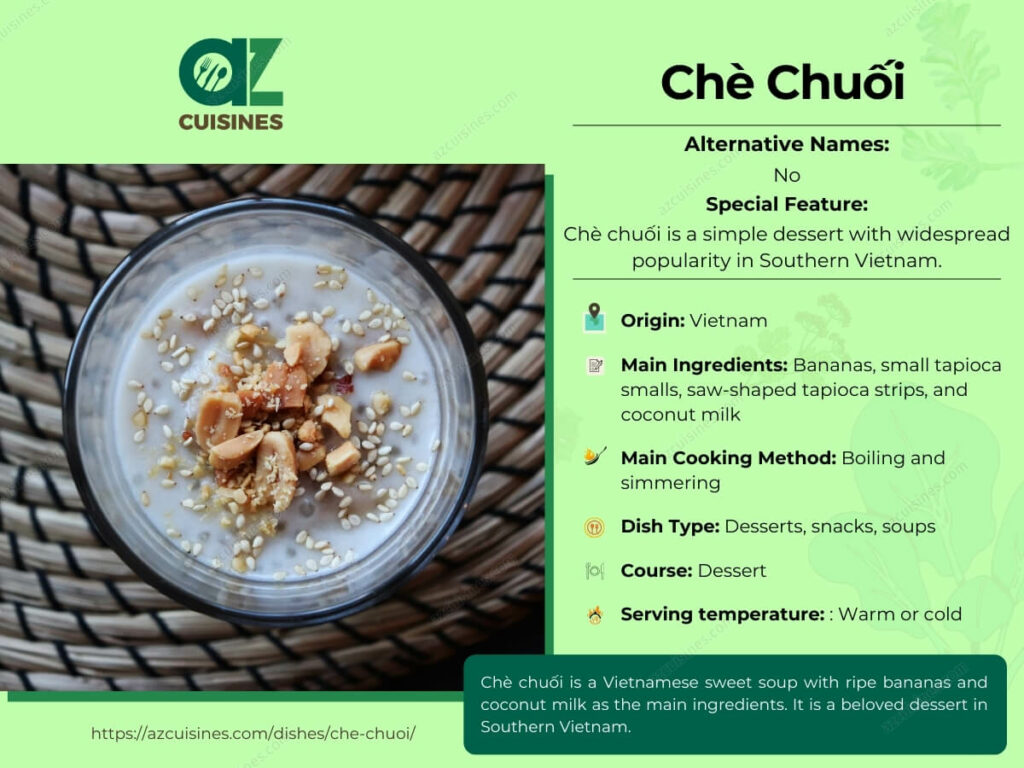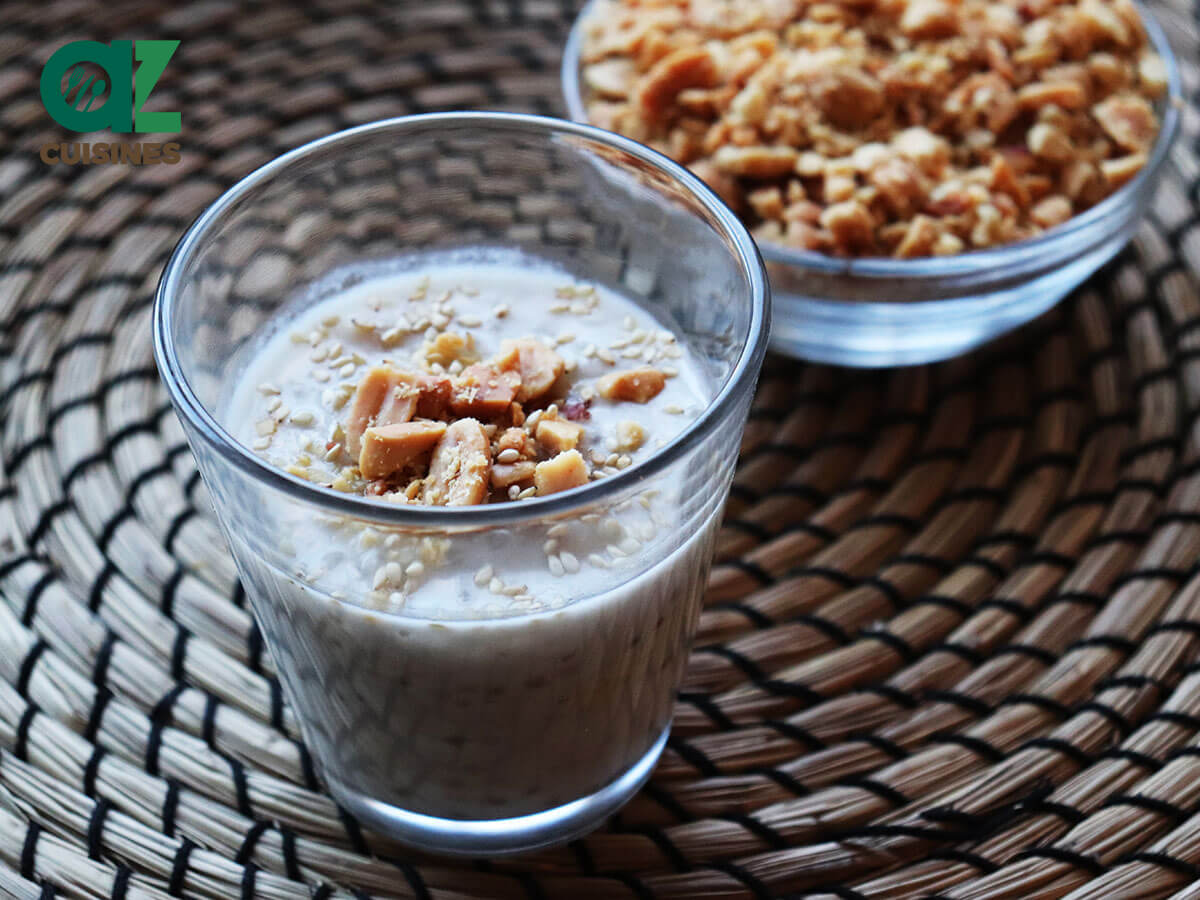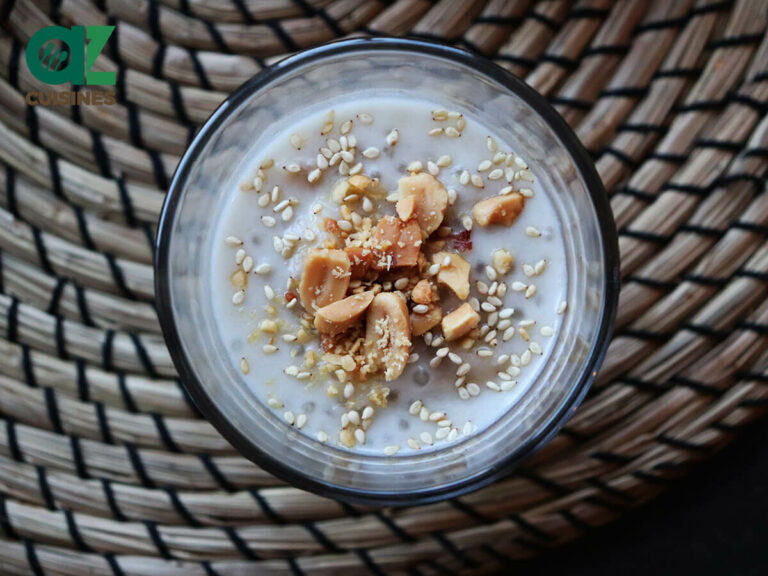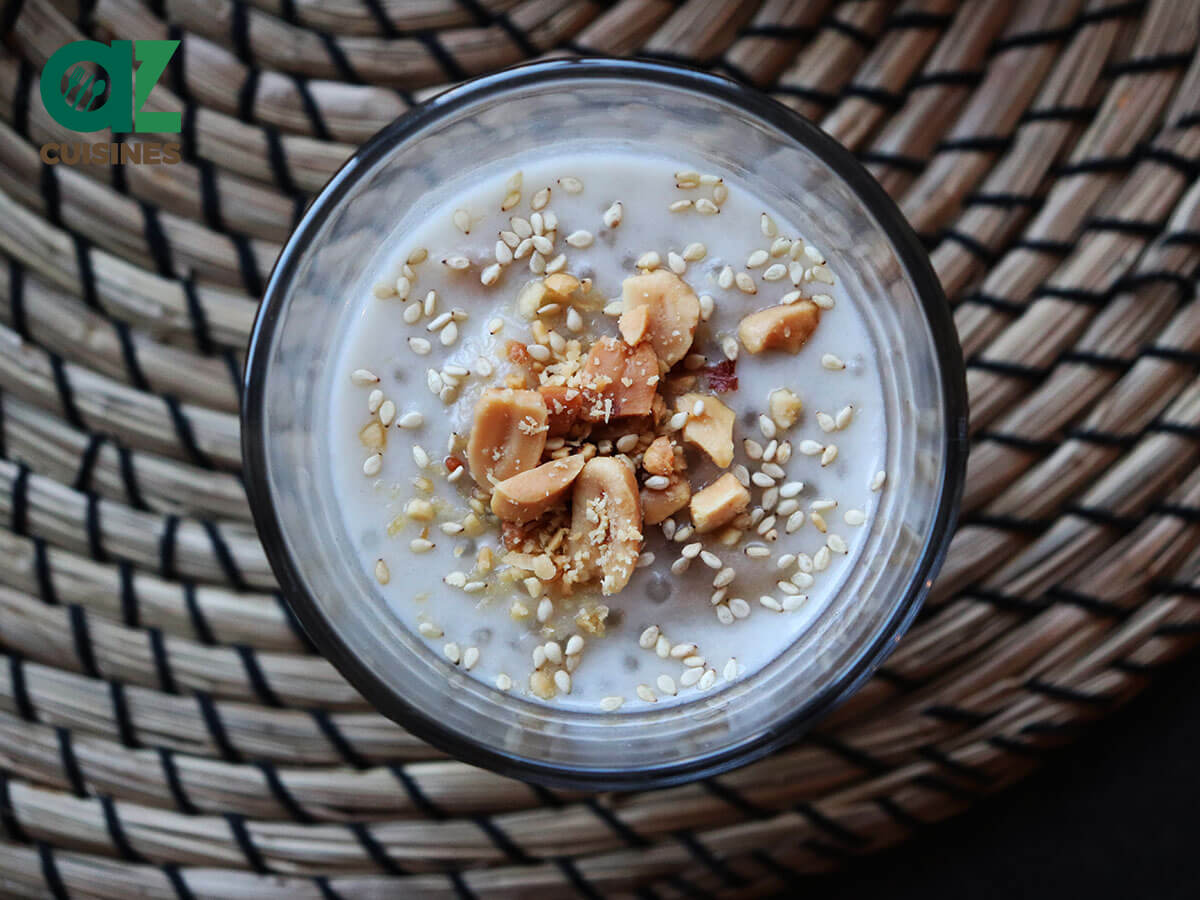Chè Chuối: Basic Information
Pronunciation
Alternative Name(s)
Dish Type
Course
Mealtime
Popular Variations
Chè Chuối: Ingredients and Preparation
Main Ingredients
Main Cooking Method
Preparation Process
Chè Chuối: A Deep Dive
Cultural Significance
Taste
Texture
Aroma
Color
Serving Style
Serving Temperature
Accompaniment
Occasions
Seasons
Special Diets
Calories
Popularity
Popular Similar Dishes
- Bubur Cha Cha
- Thapthim Krop
- Cendol
- Halo-halo
- Tong Sui
- Falooda
- Es Teler
Popular Dining Area
Chè chuối, literally “banana sweet soup,” is a traditional Vietnamese dessert soup or pudding popular in the southern region.
It consists of ripe bananas, bột báng (small tapioca balls), and bột khoai (colorful, saw-shaped strips made of tapioca starch) served in coconut milk and garnished with roasted peanuts.
Chè chuối is usually made with chuối sứ (pisang awak banana) variety, which is famous for its sweetness. Bananas are naturally sweet, so locals don’t use as much sugar to chè chuối as other chè varieties.
A small amount of salt is usually added to chè chuối to balance the flavor profile. Some people like to incorporate optional ingredients, such as sweet potatoes.
The classic version features fresh bananas, but there is also chè chuối nướng (“sweet soup with roasted bananas). This variation originated in Ben Tre Province, containing slices of roasted bananas, glutinous rice, bột báng, and peanuts.
Stay tuned to learn about the positive and negative attributes of chè chuối, a common Vietnamese street food. I will also go into common concerns about this dessert before suggesting similar dishes.
Key Points
Chè Chuối Images
Pros and Cons of Eating Chè Chuối
Chè chuối has the following advantages and disadvantages.
Pros
Cons
After going over the benefits and shortcomings of chè chuối, why don’t you explore other aspects of this dessert in the FAQs?








Truc Tran (Kris)
Senior Food Editor
Expertise
Home Cooking, Meal Planning, Recipe Development, Baking and Pastry, Food Editor, Cooking-video Maker, Vietnamese Food Evaluation Expert
Education
Truc Tran (Kris), an experienced food writer and editor, is great at exploring and describing global cuisines, from simple street food to fancy dining. In her writing, she skillfully mixes different flavors, cooking methods, and culinary traditions, showing the unique character of various cultures through their food and drinks. On azcuisines.com, Kris highlights her knowledge, especially in Asian cuisine and worldwide traditional dishes.